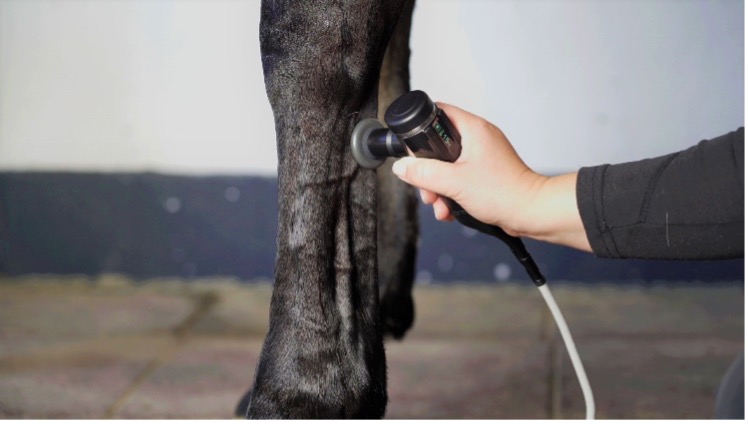Radiofrequency vs. Laser Therapy: A Comprehensive Comparison for Veterinary Physical Therapy
Published: 25 March, 2024
Marina Rodríguez Alonso
Veterinarian | Master in Equine Physiotherapy | Brand & Product Leader Animal Health
In the vast field of veterinary medicine, the constant search for innovative and effective therapies is critical to ensuring the optimal well-being of our beloved animal companions. Two technologies that have emerged as mainstays in veterinary physiotherapy are radiofrequency and laser therapy. The most common question we are asked when presenting both technologies is which is “better”. The answer to this question is that both offer unique and complementary benefits that address a wide range of conditions in dogs, cats, horses and exotic animals. Therefore, it is not a question of which is better, but which is more appropriate for the veterinary casuistry according to the needs required. Let’s see how they compare and where their strengths lie.
Radiofrequency: An Innovative Approach to Veterinary Physical Therapy
Radiofrequency therapy has gained recognition in veterinary medicine for its many benefits and noninvasive approach. Here are its highlights:
- Non-invasive: Radiofrequency is non-surgical, making it ideal for animals that may not tolerate invasive procedures.
- Circulation stimulation: This technology increases blood flow to the treated areas, which helps to deliver nutrients and remove waste, speeding the healing process.
- Pain relief: By targeting pain receptors and promoting the release of endorphins, RF helps to effectively reduce pain.
- Reduce inflammation: By improving circulation and cellular activity, radiofrequency reduces inflammation and swelling around the affected areas, facilitating healing.
- Stimulates cell regeneration: INDIBA’s specific frequency produces effects at the cellular level that regulate metabolic processes in stem cells, stimulating their differentiation and proliferation, making the natural processes of tissue repair faster and more efficient.

Laser Therapy: The power of light in animal healing
On the other hand, laser therapy has proven to be an invaluable tool in veterinary physical therapy. Its features include:
- Precision and control: Laser Therapy allows for exceptional precision in the delivery of light energy, allowing for meticulous control over the treatment.
- Cellular Stimulation: Laser light stimulates cellular activity and the production of ATP, the fuel of cells, which accelerates the regeneration and healing process.
- Edema reduction: By improving lymphatic drainage and microcirculation, laser therapy helps reduce edema and swelling in treated tissues.
- Analgesic effects: Stimulation of pain receptors and modulation of nerve pathways contribute to pain relief in patients treated with laser therapy.
Synergy and Complementarity: Maximizing animal welfare
While radiofrequency and laser therapy have their own distinct strengths, it is their strategic combination that provides a comprehensive approach to veterinary physical therapy. Together, these technologies can treat a wide range of musculoskeletal, neurological, and soft tissue conditions in animals of all species.
- Personalized treatment: By combining both technologies, veterinarians can tailor treatment to the specific needs of each patient, maximizing therapeutic outcomes.
- Broad range of applications: From pain management to post-operative rehabilitation, the combination of radiofrequency and laser therapy provides a comprehensive solution for a variety of clinical conditions in dogs, cats, horses and exotic animals.
- Optimize recovery time: The synergy between the two technologies can accelerate the healing and recovery process, allowing patients to return to full function more quickly and efficiently.
In summary, both radiofrequency and laser therapy play a critical role in veterinary physical therapy, each with its own unique benefits. However, it is their strategic integration that allows veterinarians to offer a comprehensive and personalized approach to the treatment and rehabilitation of animals of all species.
IMPORTANT: Diagnosis and treatment of any animal injury or illness should always be performed by a veterinary professional.
Want to try INDIBA?
Contact a product expert
References:
- Short-Term Efficacy of Capacitive-Resistive Electrical Transfer Therapy in Short-Haired Sled Dogs in Middle-Distance Competition
- Capacitive resistive electric transfer modifies gait pattern in horses exercised on a treadmill
- Photobiomodulation (Therapeutic Lasers): An Update and Review of Current Literature
- Therapeutic Laser in Veterinary Medicine
Related Content:
User’s Experiences | Indiba Radiofrequency & K-Laser: The Perfect Match